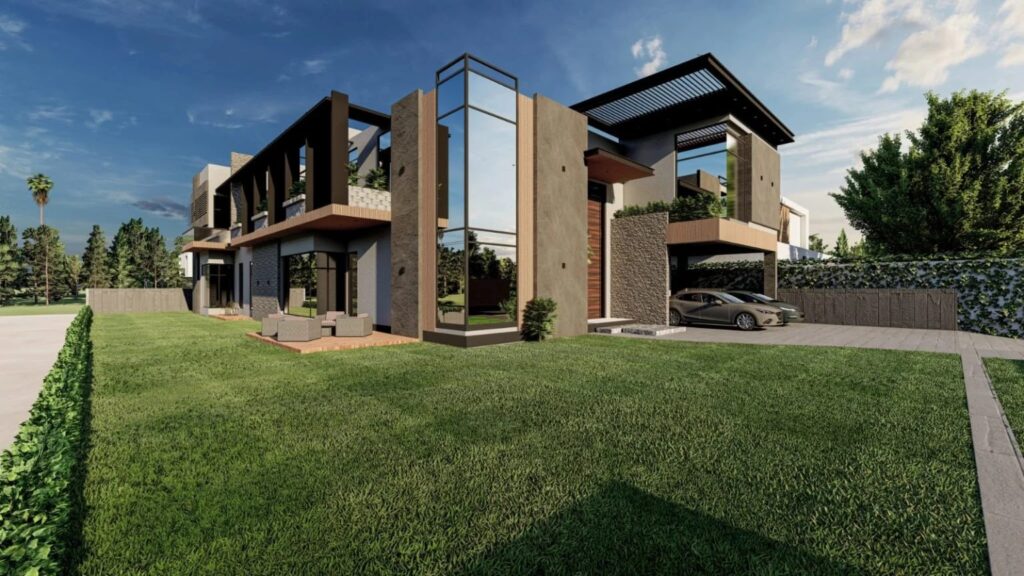Building a home is one of the most emotional and financial decisions in a person’s life. In Pakistan, it’s a dream that takes years of savings and careful planning. But often, due to lack of awareness, poor planning, or unreliable workers, people face delays, money loss, or long-term issues in the house. This article explains how you can avoid the most common mistakes during home construction by using proper steps from the beginning.
Whether it’s grey structure construction or final finishing, each stage needs care, patience, and the right information.
1. Not Preparing a Clear Budget
The biggest mistake people make is starting construction without knowing the complete cost. Many times, people only plan for the basics—bricks, cement, and labour—but forget hidden costs like plumbing, wiring, paint, cabinets, and grills. Always sit with an experienced person, contractor, or engineer and make a full cost estimate before starting anything.
Include small things like light switches, water tanks, and even cleaning charges. Don’t forget to add 10–15% extra money for unexpected costs. This will help you avoid cash shortages during construction.
2. Ignoring Soil Testing and Site Planning
Before digging the foundation, always get the soil tested. In many areas like Lahore or Karachi, the soil may be too soft or hard for normal foundations. Without proper testing, your home might develop cracks or water problems in future. Site planning is equally important—check if the plot level is above the road, if water drainage is proper, and whether there’s space for a septic tank or water bore.
3. Using Outdated or Weak Designs
Some people follow old construction maps or copy others without checking if the design fits their family needs or plot shape. This causes issues later like poor ventilation, less sunlight, or odd room sizes. A good layout saves space, provides comfort, and makes the home more useful in daily life. Always discuss the map with a proper architect or civil engineer.
Using a thoughtful design also helps in luxury interior decoration later on. When spaces are well-planned, features like wall panels, ceiling lights, or modern furniture fit easily and enhance the house’s beauty.
4. Hiring the Wrong Contractor or Team
Many people hire a contractor just because he is cheaper or recommended by a relative. But cheap doesn’t always mean good. Ask for past work examples, check if the contractor gives receipts, and make sure he follows legal rules. Always write down agreements—no verbal promises. Delays and poor-quality work often come from unskilled teams.
Also, supervise the labour team yourself regularly. Small mistakes like wrong wall thickness, uneven plaster, or poor material usage can create big problems later.
5. Using Low-Quality Material to Save Money
Using cheap bricks, poor cement, or thin iron bars may save money today, but you’ll end up paying more for repairs later. Your house must stand for generations. Use trusted brands for steel, cement, and other items. Don’t allow the contractor to replace materials without asking you.
Check everything when it arrives on site—this includes sand type, crushed stone, and water quality. Salty water, for example, weakens the concrete mix over time.
6. Ignoring Ventilation and Natural Light
In Pakistan’s hot weather, air and sunlight play a big role in comfort. Always plan for cross ventilation and big windows. Small, closed rooms become ovens in the summer. If the design includes open spaces like a courtyard (sehan), it makes the house feel more spacious and helps in reducing electricity bills.
7. Forgetting Future Needs
Most people build their homes based only on today’s family size. But what if you have more kids or guests in the future? Or need a study room for your online work? Think ahead. Add basic structure for future floors, design open areas that can be enclosed later, or leave plumbing points for another bathroom. It saves future costs and trouble.
8. Poor Electrical and Plumbing Planning
Hidden systems like wiring, pipes, and drainage are often not taken seriously. But once tiles are laid, it’s very costly to fix mistakes. Plan how many sockets you need, where your water lines will go, and how waste water will leave the house. Use PVC pipes and proper circuits with breakers to avoid shocks or water leaks.
Also ensure that all main lines are accessible later. Don’t place them behind permanent concrete walls.
9. Delaying Legal Paperwork and Approvals
In many towns and societies in Pakistan, you need NOCs (No Objection Certificates) before construction. Delaying or avoiding them can lead to fines or even house demolition. Get your design approved from the local authority (LDA, CDA, etc.). Keep copies of all legal documents safe, including property ownership and tax payments.
10. Not Focusing on Finishing Details
Once the grey structure is ready, many people rush the finishing. They buy cheap paint, weak door handles, or mismatched tiles just to complete things faster. But this is the part of the house you live in and see every day. Spend time on choosing the right colours, fitting woodwork properly, and aligning wall tiles neatly.
Even things like curtain rods or mirror fitting should not be done in a hurry. Finishing is what makes your house feel like a home.
Final Advice
Avoiding common construction mistakes is not about spending more money—it’s about making smart, informed decisions. Build your home slowly but carefully. Whether you’re building a single-storey house or a two-floor bungalow, take every step seriously.
A little planning today saves a lot of stress tomorrow. Get help from experts, double-check your materials, and supervise every stage personally. Your home is not just a structure—it’s your family’s future.
So whether it’s starting the grey structure construction or planning your luxury interior decoration, always stay involved and alert.


